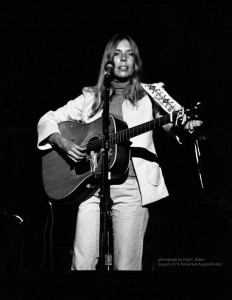We are the music makers,
And we are the dreamers of dreams. . .
-Arthur O’Shaughnessy

As a person accumulates time on this planet, and if they are among the “sound- centrics”* who crave music in their lives, they are likely to experience a unique kind of mourning when a favorite musician dies. The feeling mimics the kind of response we might expect with the passing of a family member. To be sure, the act of grieving for a performer is likely to be more parasocial than communal. But it replicates the same sense of loss we experience with someone we know. Because a person’s music can have such a hold on their identity, and because their music obviously remains alive on recordings, their passing can be an unwelcome disruption of a ‘relationship’ we cherished. The residuals of feeling easily expand to include musicians with whom we shared an expressive history. As it often works out, the sense of loss we may be ours alone within our immediate circle.
Time travel with a musician is unique to the phenomenology of the self.
There are reasons for this effect. Musicians have a privileged relationship with members of their audiences. The curve of success for influential musicians often parallels our own intense musical awakenings in youth: a pattern that means that performers and their admirers may be traveling the same timeline of the life-cycle. Even in this one-way relationship musicians can become familiar media “friends,” even more so because our key life experiences are accompanied by soundtracks that they have created. It should hardly be a surprise when their deaths cut deeper than we might have expected.
 Every music lover would have their own list of singers, songwriters and players who have been granted a kind of permanent immortality. When they are suddenly gone, we notice and care. At least that is how it felt to me on learning recently of the deaths of singer Tony Bennett and Canadian musicians Gordon Lightfoot, Ian Tyson, and The Band’s Robbie Robertson (below).** The music world lost all of them recently. An extended period for this novel kind of mourning tends to lengthen as we reclaim their presence through videos and recordings.
Every music lover would have their own list of singers, songwriters and players who have been granted a kind of permanent immortality. When they are suddenly gone, we notice and care. At least that is how it felt to me on learning recently of the deaths of singer Tony Bennett and Canadian musicians Gordon Lightfoot, Ian Tyson, and The Band’s Robbie Robertson (below).** The music world lost all of them recently. An extended period for this novel kind of mourning tends to lengthen as we reclaim their presence through videos and recordings.
Like mine, any person’s list of recent losses will be personal and idiosyncratic, and as expandable as an old accordion. It speaks to our individuality that no two individuals would likely claim the same musical placeholders that we keep for our inner selves. Time travel with a musician and their work is unique to the phenomenology of the self.
It was not always so. Victorians especially struggled to comprehend what it meant to be listening to a recording of a deceased singer. A ghost from the past, many thought. Some were unsettled by the act of bringing the very breath of a singer back to life. Did this violate the natural order of things? Or had we finally tapped a way to hear the angels? After all, before recording, sound was the most precious of phenomena: at once transient, but extremely effecting.
The power of recorded sound to defeat aging and death makes it a kind of time machine of the psyche: a portal to a past we recognize and often want to relive. Songs of the deceased offer the chance to reinterrogate the identities we once owned, envied, and perhaps abandoned. All of this evocative power makes it easy to understand why the lives of musicians are among the most enduring social markers.
______________________
*As noted in The Sonic Imperative (2021), this inexact but useful characterization is meant to identify the millions of individuals among us who are consistently constantly seek fulfillment in the creation or consumption of auditory media: mostly music, but not exclusively so.
**Robbie Robertson leading off his song, The Weight, with a world of musicians contributing.
![]()



